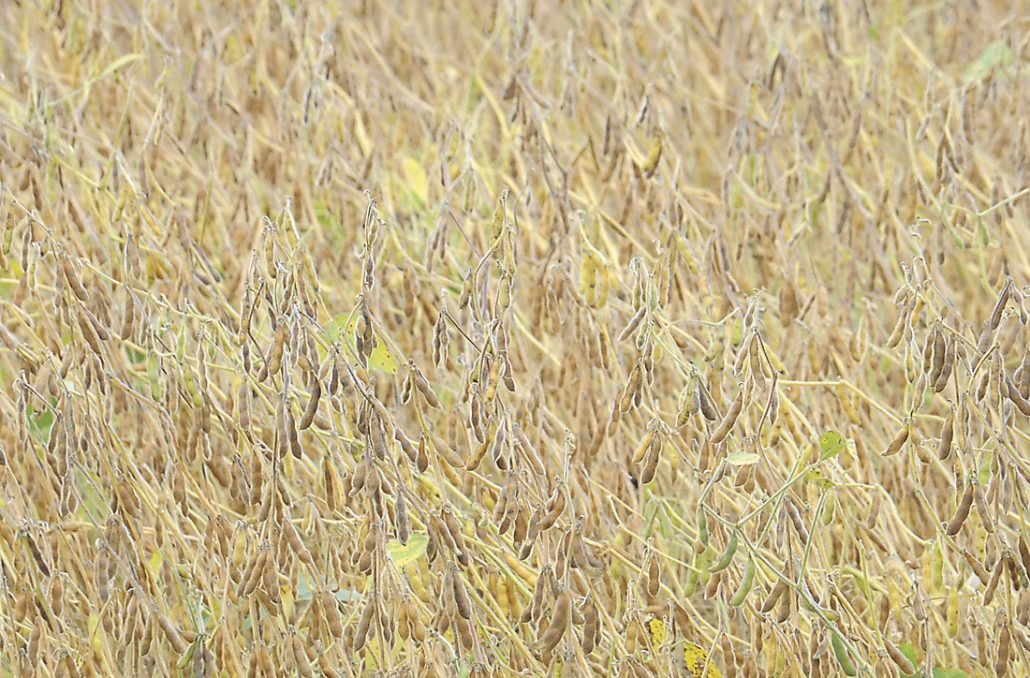
By Per Peterson
Harvesting corn and soybeans in mid-September is not an uncommon practice. In 2017, however, farmers have been forced to wait.
Thanks to a cool, wet spring that delayed planting (only 12% of the state’s corn was in the ground in early May) and a wet August, one would be hard-pressed to spot a combine prowling a corn or soybean field this week, or next, for that matter.
Jerry Beck, an agronomist with CHS Tracy, said yields are looking good so far, but “probably not as good as the last couple of years,” he said.
Nearly 6 inches of rain fell in Tracy in August, including 2.87 inches on Aug. 16, and Beck said that while the moisture served the crops well, it also set the progress of the crops behind.
“We lost all of our ground in August,” he said. “We’re about 103 growing-degree days behind the 30-year average. But we’re about 200 ahead of 1993 — that was the year we had the floods.”
Beck said the August rains helped produce beans and top off the corn crop, but added that the area has been lacking in the heat department.
Beck said there is a growing concern over storage again this year, considering the carryover from 2016.
“We still have grain out in the country from last year,” he said. “Farmers got a lot of grain, elevators got a lot of grain. You will see a lot of grain piled in the country again. We’re trying to chew through all this near-and-dear inventory, while trying to manage this year’s.”
Coming off consecutive record years, Beck said this year’s likely won’t be a bumper crop, but it should be above average.
“We’re looking at drying quite a bit of corn,” he said.
Warm conditions aided maturity of corn and soybeans and contributed to a rapid harvest pace of dry edible beans last week, the USDA said in its weekly crop report. According to USDA’s National Agricultural Statistics Service, there were 5.7 days suitable for fieldwork last week.
Some areas reported fall tillage delays due to dry conditions.
Eighty-six percent of the corn for grain crop reached the dent stage, remaining five days behind the five-year average, the USDA said. Thirteen percent had reached maturity — 10 days behind both last year and average. Corn for silage was 30 percent complete, 11 days behind average.
The state corn crop is rated at 65% “good” and 16% “excellent.”
Soybeans are 61% “good” and 13% “excellent.” Eighty-one percent of the soybean crop was turning color with 36 percent dropping leaves. Scattered reports of soybean harvesting were noted in northern Minnesota. Soybean condition remained at 72 percent “good” to “excellent.”
Bruce Potter, Extension IPM specialist with the University of Minnesota, said he thinks this year’s harvest will be fine, despite the delay in getting into the fields.
“The corn is just a little bit behind overall and soybeans have been running about a week behind; a lot of fields are starting to turn right now,” Potter said. “I think we’ll be in pretty good shape.”
Potter said there are some nematode issues in some fields in southwest Minnesota, causing them to turn unevenly, but as long as there isn’t an early frost this fall, he anticipates a strong crop.
“I think we’ll have a good crop,” he said. “We got pushed back a little bit on corn from the cloudy weather in August, and with soybeans there’s a little bit of pod abortion and we’ve got some disease showing up. We’re not horribly far behind, but we usually do have a few fields out by now.”
Topsoil moisture supplies rated 2 percent “very short,” 16 percent “short,” 78 percent “adequate” and 4 percent “surplus.” Subsoil moisture supplies rated 4 percent “very short,” 15 percent “short,” 78 percent “adequate” and 3 percent “surplus.”
